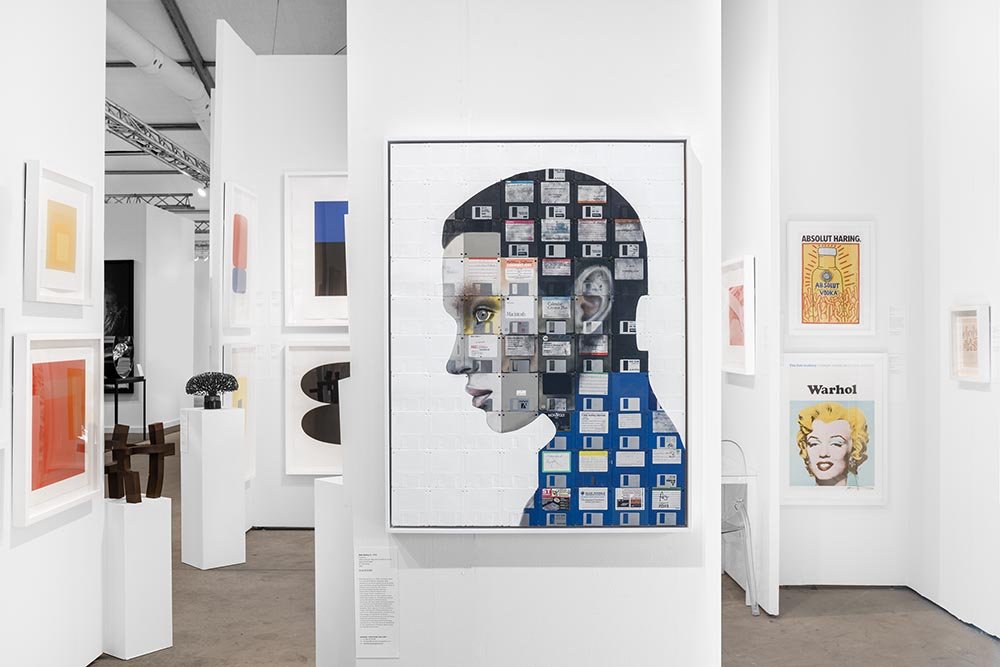Yell-o
Group show
C24 Gallery, New York
2014
C24 Gallery is pleased to present YELL-O, a group exhibition featuring the work of emerging artists J. Mikal Davis, Nick Gentry, Adele Mills and Ekaterina Panikanova.
The title of the exhibition is a play on words, referring to the act of ‘Yell’-ing “O!” and the colour yellow itself
Yellow is the most visible colour of the entire spectrum, it is the first colour that the human eye notices and is the most visible from a distance. Yellow symbolises warmth, summer and happiness.
YELL-O brings together a vibrant group of international artists who conceptually and literally reinterpret materials within their practice.
Suitcase Magazine Meets: Nick Gentry
SUITCASE MAGAZINE: Your work appears to have been inspired by technology from the beginning. How has this come about and evolved during your career?
NG: The overriding investigation for me is about identity, but it's clear that technology is having an ever-increasing impact on who we are. The technological changes that have happened in the past ten years or so have really influenced my life.
Collectively, we are driven and committed to this technological advancement. Perhaps more than anything else. As a result we are getting much closer to technology, almost to the point where we are completely meshed with it and the boundary between human and machine is increasingly becoming blurred. This transition brings up so many new questions about our shared human identity.
SM: It's interesting that you choose to allow others to donate materials for your pieces. Have you always used this method in the production process and have you ever regretted your decision to let others be so involved in the process?
NG: The open process evolved mostly of its own accord. I started off going out and trying to find these old materials but after a while through exhibiting and sharing my work it became clear to more people that they could contribute.
It's not a traditional approach, but I'm not precious about 'owning' all aspects of the creative process, so there is nothing to regret about that. In fact I find it inspiring that people from all over the world that seemly have no connection can come together for a simple creative purpose.
Primarily, I want to find new ways to make art. I still have control, but the beauty of each piece isn't so much in the craft or any of my direct work. Instead the emphasis has shifted more towards the spirit of the project. Some thing about it feels right that it works in a complete cycle.
SM: You've said that the small clues left on labels from the donations help to create the story behind each piece. How do you evolve each story, and are there any other elements that help create this?
NG: The labels often form the titles of each piece. Aside from that the connections that are made are entirely the viewer's own.
I'm not going to prescribe a particular interpretation for each painting that I create as I think that would destroy the openness of the art . It's not so much about one story, but more about showing how lots of different stories can overlap.
SM: Talk about your choice to focus on portraiture specifically. Are any of your portraits based on specific subjects?
NG: Portraiture is something that has always come naturally to me. Faces give us a feeling about where we have been and who we are. It's a pure and direct way to examine identity. I have based my work on real people before, but mostly I don't even consider the faces to be human.
The materials form the subject, so in a sense I don't even regard the faces as the true subject of the work. With my work it 's probably more about what is inside (or what is hidden), rather than what you see on the surface.
SM: You've been described as a street artist and have showcased with other street artists including Banksy. Would you consider yourself as one?
NG: I don't consider myself to be a street artist as I don't work in the street. I'm perfectly happy in my studio. I don't place much importance on categories and a lot of my favourite artworks defy categorisation entirely. I tend to gravitate to the spaces in-bet ween, in the areas that are harder to define.
SM: Have you always wanted to be an artist? Was there a particular inspiration that helped you decide to go down this career path?
NG: Ever since I can remember I have always wanted to be an artist. From a very early age I was lucky to have the support of my parents and some teachers, which really helped me to believe that it could be possible.
SM: You've shown your work all over the globe. Are you inspired by any particular cultures or locations?
NG: Living in London allows me to appreciate the fascinating mix of cultures that we have. For me, the focus isn't on any one particular culture. You can see in my work that it is about collecting disparate objects and fusing them together.
SM: If you could show your work anywhere in the world, where would it be and why?
NG: New York is the place that I am going to show next, at C24 Gallery in June. It's a city that I admire from afar and I have wanted to show there for a long time. Like London, it's bursting with energy and fully embraces the future.
“Questions the distance between man and matter.”









